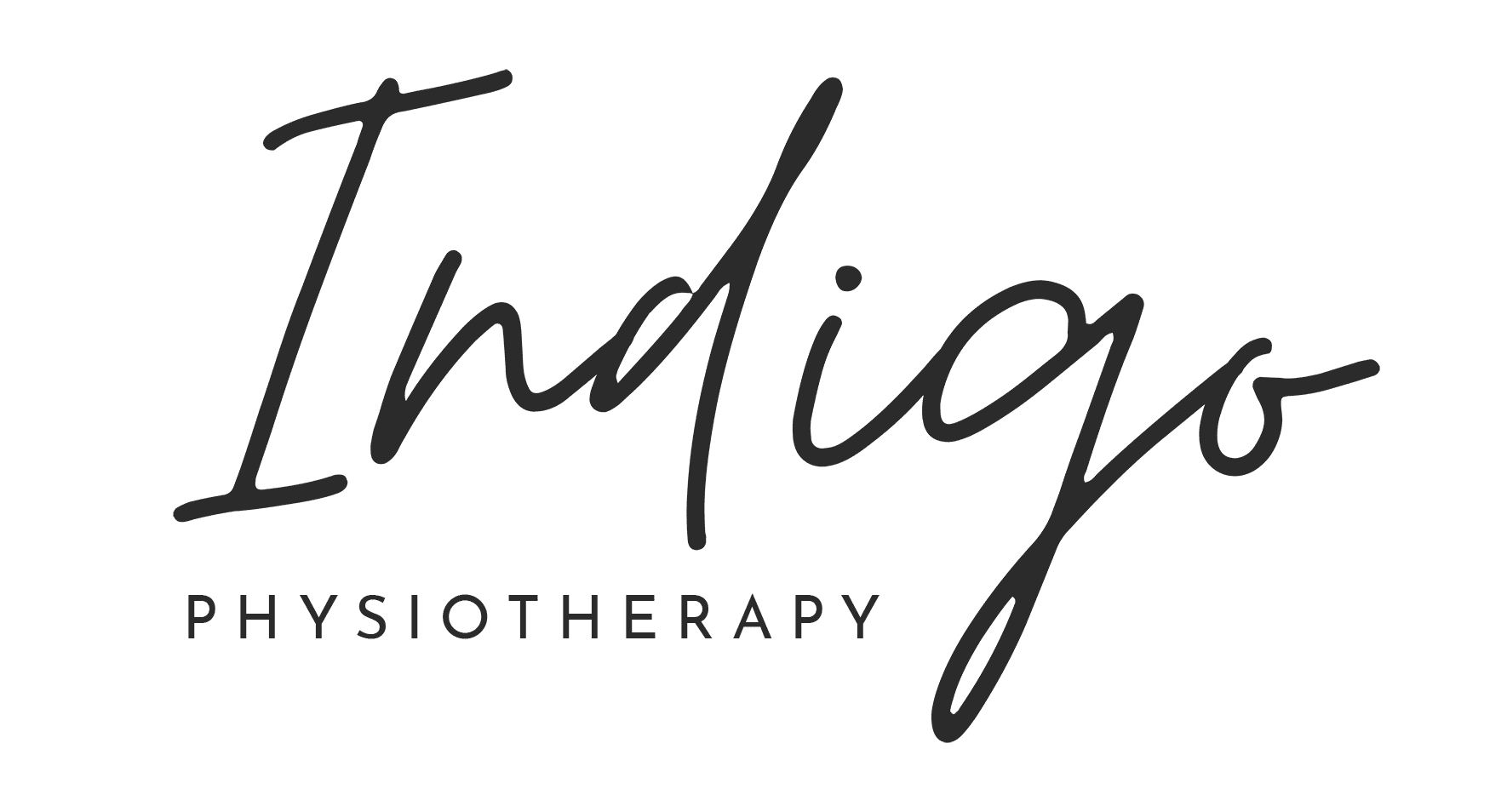Some people might be dreading menopause as an inevitable experience they can’t escape. While we agree that it’s unavoidable, it’s time to challenge the stubborn stigma that somehow it has come to signal a period of decline.
Instead, we’re celebrating menopause as the start of a new chapter while arming you with the proper knowledge and strategies to navigate this transition with more comfort and ease. Plus, you’ll learn about the various ways physical therapy can help you navigate perimenopause and menopause with confidence.
But before we dive in – we want to acknowledge that, yes, your body will go through changes, and to some people, it might be more noticeable than others. However, our bodies are always in a constant state of flux, and while this transition might come with challenges, it also brings about positive changes.
Ultimately, this new phase of life deserves to be celebrated instead of feared. It’s a chapter of change, so approach it with the mindset of embracing new possibilities and perspectives. It’s a moment to check in on your health, fine-tune where needed, and celebrate the end of one phase while looking forward to the other side.

What are Perimenopause and Menopause?
Menopause marks the official end of your menstrual cycle, and it’s diagnosed after you’ve gone 12 consecutive months without a period. This is a natural biological process that signifies the end of fertility.
While we may typically associate menopause with the aging process, some people may go through menopause for reasons other than aging. Someone might go through medical menopause through hormone suppression for specific medical diagnoses. Or menopause could be triggered by the removal of ovaries for various reasons, like treating a particular type of cancer.
Perimenopause is the transitional period leading up to menopause, which may last anything from a few months to over a decade. During this time, your ovaries gradually reduce the production of eggs and hormones, resulting in various symptoms and changes in your body.
“Perimenopause” is a relatively new term, as previously, people’s experiences “around menopause” were often just lumped together as a natural part of aging. Luckily, the recognition of perimenopause as a stage on its own has led to more targeted research, understanding, and treatment options for people going through this transitional phase.
Timeline and Changes: What to Expect
The onset of perimenopause typically occurs in your 40s, although it can occur as early as your mid-30s. Your estrogen level fluctuates significantly during perimenopause, causing a variety of changes throughout your body.
However, keep in mind that a symptom you might be experiencing that seems like a typical perimenopause or menopause symptom might be due to something else. So, never hesitate to contact your medical care team to verify.
The list of symptoms could feel pretty overwhelming, but it doesn’t mean you’ll experience all of them. Fortunately, so many of these symptoms can be addressed or reduced with the right care. Plus, some positive changes might even surprise you!
Signs and symptoms of perimenopause
1. Irregular periods
Ovulation becomes more unpredictable, and your menstrual cycle may become irregular, shorter, longer, heavier, or lighter. But remember, some disruptions in your menstrual cycle don’t necessarily signal early perimenopause. Many other factors, such as stress, nutritional changes, lifestyle changes, or diet, can influence your cycle.
2. Hot flashes
Sudden feelings of heat that vary in intensity, length, and frequency. This is a very common symptom during perimenopause.
3. Sleep problems
Interruptions often occur because of hot flashes or night sweats, but sleep disturbance can occur even without hot flashes.
4. Mood changes
Mood swings and irritability may occur, as well as an increased risk of depression. These symptoms may be caused by sleep disruption or other factors not related to perimenopause or menopause, so always check in with your care provider if you’re not feeling like yourself.
5. Vaginal dryness
Low estrogen levels can lead to loss of lubrication and elasticity of the vaginal tissues, creating some discomfort or pain during intercourse. If you’re not doing so already, start experimenting with different kinds of lubes for added comfort. Low estrogen may also make you more vulnerable to urinary or vaginal infections.
6. Vaginal burning and discharge
Changes in the vaginal environment can cause irritation and abnormal discharge.
7. Genital itching
Hormonal changes can lead to persistent itching in the genital area.
8. Urinary urgency and frequency
The decline in estrogen during menopause can increase the sensitivity of the bladder, making it more reactive. This hormonal change may also weaken pelvic muscles, affecting bladder support and your ability to retain urine. As a result, you might experience more frequent trips to the bathroom (urinary frequency) or a sudden, intense urge to urinate (urinary urgency).
9. Urinary incontinence (loss of bladder control)
Urinary incontinence can result from the atrophy of urethral and vaginal tissues or weakened pelvic muscles, both of which can occur with the decline in estrogen during menopause. These changes can compromise bladder control, leading to involuntary leakage of urine.
10. Burning with urination
A sensation of burning during urination is common This can be due to hormone changes, but like any of these symptoms, it’s important to note that any of these signs or symptoms could be perimenopause or menopause, and it’s always important to touch base with your health care practitioner.
11. Decreasing fertility
As ovulation becomes irregular, your ability to conceive decreases. As long as you are still having periods, pregnancy is still possible, so use birth control if you wish to prevent pregnancy.
12. Changes in libido
Hormonal changes may cause a change in sexual arousal and desire. As hormonal changes also lead to decreased blood flow to your pelvic area, orgasms may feel different or less ‘powerful’.
These changes are common during this timeframe in your changing physiology but can be addressed. Give yourself (and your partner) the time and space to (re)explore what you need and what you enjoy. See this as an invitation to try new methods of foreplay to increase blood flow and lubrication to the area and experiment with new kinds of lubricant.
Many people find that once they’ve completely stopped ovulating and they can stop using birth control or don’t have to worry about pregnancy anymore, they can enjoy sex even more.
13. Loss of bone density
One of the most significant effects of declining estrogen levels during menopause is the reduction in bone density. Estrogen plays a crucial role in maintaining bone strength; as its levels drop, bones become more brittle and fragile. This condition, known as osteoporosis, increases the risk of fractures, even from minor falls or injuries.
14. Changes in cholesterol levels
Cholesterol changes can occur due to decreased estrogen, increased “bad” cholesterol (aka low-density lipoprotein), and decreased “good” cholesterol (aka high-density lipoprotein). Both put you at a greater risk for cardiovascular disease.
15. Relief from menstrual symptoms
Hormonal changes that govern your menstrual cycle can cause symptoms ranging from bothersome to severe. When you start menopause, estrogen and progesterone levels decline permanently, ending your monthly periods and the accompanying symptoms. So, it could finally be time to wave goodbye to those pesky premenstrual migraines!
16. Uterine fibroids may shrink
Uterine fibroids are noncancerous growths influenced by estrogen and progesterone. They often shrink and become less noticeable during and after menopause. This natural reduction can alleviate severe symptoms like pain, heavy menstrual bleeding, and pressure on the bladder.

The Effects on Your Pelvic Floor
As estrogen levels drop, it may have significant effects on your pelvic floor muscles, which may lead to some uncomfortable symptoms. Fortunately, it doesn’t have to be all doom and gloom if you are experiencing these symptoms, as plenty of strategies and tools can provide relief.
Atrophy, or thinning of muscles, can be caused by disuse, declining hormones, or declining blood flow (which provide nutrients to the tissues) in perimenopause or menopause.
Since this is a bit of a flywheel (all three things impact each other), sometimes this thinning of muscle – which leads to weakness as well – can lead to increased incidence of pelvic organ prolapse, leaking, urinary frequency, or pain with penetration for intercourse or a medical exam.
But weakness does not mean your muscles are necessarily “loose.” It could be that the varying effects of perimenopause make the muscles shorter or tighter. So before you do 100’s of kegels, see a pelvic PT to find specific recommendations for your needs.

How Pelvic Floor Physical Therapy Can Help During Perimenopause and Menopause
Pelvic Floor Physical Therapy (PFPT) can be an incredible tool for managing the various symptoms and changes associated with perimenopause and menopause.
Your therapists can provide crucial education about hormonal changes and the impacts of those changes on vaginal tissues. Plus, they can provide information about the appropriate movement, exercises or stretches to impact bone health, maintain muscle strength, promote blood flow, libido, and prevent pain or dryness.
From various exercises and stretches, to suggestions on lubes or toys, to other self care techniques, pelvic physical therapy with a menopause physiotherapist can arm you with a curated, evidence based arsenal of knowledge to fit your needs.
However, it’s important to reiterate that issues like leaking and weakness isn’t always directly correlated to kegels (or pelvic floor muscle contractions). Many people need more help with breath, core control and coordination, intrinsic core and hip strength, movement patterns/posture, and lengthening/stretching. Your therapist will be able to guide you through all of these different elements.
What to Expect from Pelvic Floor Physical Therapy (PFPT)
Pelvic Floor Physical Therapy (PFPT) offers a personalized and comprehensive approach to helping you manage your symptoms.
However, depending on the physical therapy practice you choose, there might be differences in how your initial evaluation is conducted, what type of treatments you can expect, how long sessions are, and even where they take place (a private room vs. an open gym). For example, across all of Indigo’s locations in Maryland and Virginia, sessions are always conducted 1:1 in a private room.
We recommend looking for a place where the therapists have a higher level of certification in pelvic floor physical therapy and where there’s more than one pelvic floor therapists at a clinic so that mentorship takes place.
We encourage you to do your due diligence and make use of any free consultations to ensure you find a clinic that you trust and look forward to visiting. It’s also important to ask about training in manual therapy techniques during such a consult and to verify that sessions are 1-1 with practitioners.
Here’s what you can expect from working with your therapist:
Evaluation Techniques
The pelvic floor evaluation is tailored to each person’s comfort level and specific needs and includes the following elements:
-
- Functional Movement Screen: This involves assessing how your body moves and identifying any limitations or compensations in movement patterns.
-
- Breathing Mechanics: Evaluating your breathing patterns to ensure optimal oxygen flow and core support.
-
- Scar Tissue Assessment: Examining any scar tissue from previous surgeries that might affect pelvic floor function.
-
- Hip Range of Motion (ROM) and Strength: Checking the mobility and strength of your hip joints, which are integral to pelvic stability.
-
- Lumbar Spine Mobility: Assessing the flexibility and movement of your lower back to understand its impact on pelvic health.
-
- Deep Core Activation: Evaluating the engagement and strength of your deep core muscles, which play a crucial role in overall functional movement.
-
- External Assessment: A therapist may perform an external evaluation with your consent. This evaluation will include palpation of the urogenital triangle to assess muscle tone, pain points, or symptom reproduction.
-
- Internal Assessment: If necessary and with your comfort in mind, a therapist may conduct an internal assessment to evaluate pelvic floor function related to common diagnoses such as urinary incontinence, prolapse, vaginal atrophy, or pain (including discomfort during intercourse or perineal pain).
Treatment Techniques
Treatment techniques are always individualized and will vary from person to person. You can always expect to gain knowledge from your therapists about perimenopause and menopause and the associated symptoms that you may be experiencing.
Based on your initial evaluation, you’ll receive an initial home program that can include breathing mechanics, strength exercises, stretches, or functional movement training based on your specific goals and symptoms.

Other Components of Care for Managing Perimenopause and Menopause Symptoms
In addition to PFPT, several other components of care can help manage symptoms. These include nutritional support, enough sleep, medical management, and regular exercise.
The Benefits of General Exercise During Menopause
While regular physical activity is a cornerstone of health maintenance, it becomes especially critical as your body goes through this transition. As your estrogen levels are waning and your risk of osteoporosis increases, strength training is essential to helping you maintain bone density.
Loss of muscle mass also typically begins in your 30s and 40s and accelerates during the menopause transition. This loss is primarily due to the slowing of metabolism that comes with age. The most effective way to slow and possibly even reverse this muscle loss is through regular physical activity.
Getting sufficient cardiovascular/aerobic exercise is also vital for cardiovascular health, as you might see changes in your cholesterol levels. Plus, exercise can significantly boost your mental health while helping to combat that feeling of brain fog that might sneak up on you.
So, when defining your exercise goals for health maintenance, ensure that you include sufficient cardiovascular/aerobic exercise, muscle strengthening exercises, and balance training in your program.
Not sure where to begin? Enlist the help of professionals to help you create a custom program that will meet these goals while considering any specific needs or limitations you may have. Learn more about how to protect your pelvic floor when exercising.
Even if exercise is already a regular part of your routine, professional guidance from a physical therapist can help ensure that your program addresses your body’s changing needs and that you can get the most out of your workout sessions.
Starting a new exercise regime or changing your routine isn’t always easy, so a professional can often be that cheerleader or accountability partner to help you get started.
Or even if you’ve never exercised, tackling all these elements can feel overwhelming. Trust us – no one just walks into a gym or a studio and instinctively knows what to do, how to do it, and how often to do it. It’s nothing more than a skill you can learn step-by-step at a pace that feels good for you.
Medical management of menopause symptoms
Medical management can play a crucial role in alleviating many of the symptoms associated with menopause. For this type of treatment, you’ll work with a medical practitioner like a gynecologist or endocrinologist. One of the most common and effective treatments is hormone replacement therapy (HRT). There are two types:
-
- Systemic hormone replacement therapy: Estrogen taken in pill, skin patch, ring, gel, cream, or spray form. The estrogen is absorbed throughout the body and can be used to treat any of the common symptoms of menopause.
-
- Low-Dose Vaginal Products: Estrogen in cream, tablet, or ring form is used directly in the vagina to treat vaginal and urinary symptoms. Since it’s applied locally to the vagina, this estrogen does not affect the rest of the body.

Key Takeaways
Navigating the journey through perimenopause and menopause can be challenging. But it doesn’t mean you must tolerate symptoms you’re struggling with and simply accept it as “an inevitable part of life.”
Remember, just because something is common – doesn’t mean it’s normal. An issue like incontinence, for example, is a dysfunction and not simply a consequence of aging or menopause that you can’t tackle.
We encourage you to consider different kinds of health care professionals who can help you manage the symptoms that are disrupting your life the most such a Pelvic PT, gynecologist, therapist, acupuncturist etc.
The Doctors of Physical Therapy at Indigo locations across Maryland and Fairfax Northern Virginia can guide and support you through the journey of perimenopause to menopause and beyond so that you’re always equipped with knowledge and appropriate support for every phase of life.
So embrace this life stage with confidence, knowing that you have various tools at your disposal to navigate this transition feeling empowered and in control.
Remember, you are not alone in this journey, and with the right support, you can stay strong, pain-free, and leak-free in this next chapter of your life without being sidelined by menopause.
Dr. Lizzie Purcell Daniel PT, DPT, and Baltimore Roland Park Team Members
If you want to learn more about how physical therapy can support you – schedule a free 15-minute call with one of our Doctors of Physical Therapy by calling 1-888-803-4244 or book your session here.







